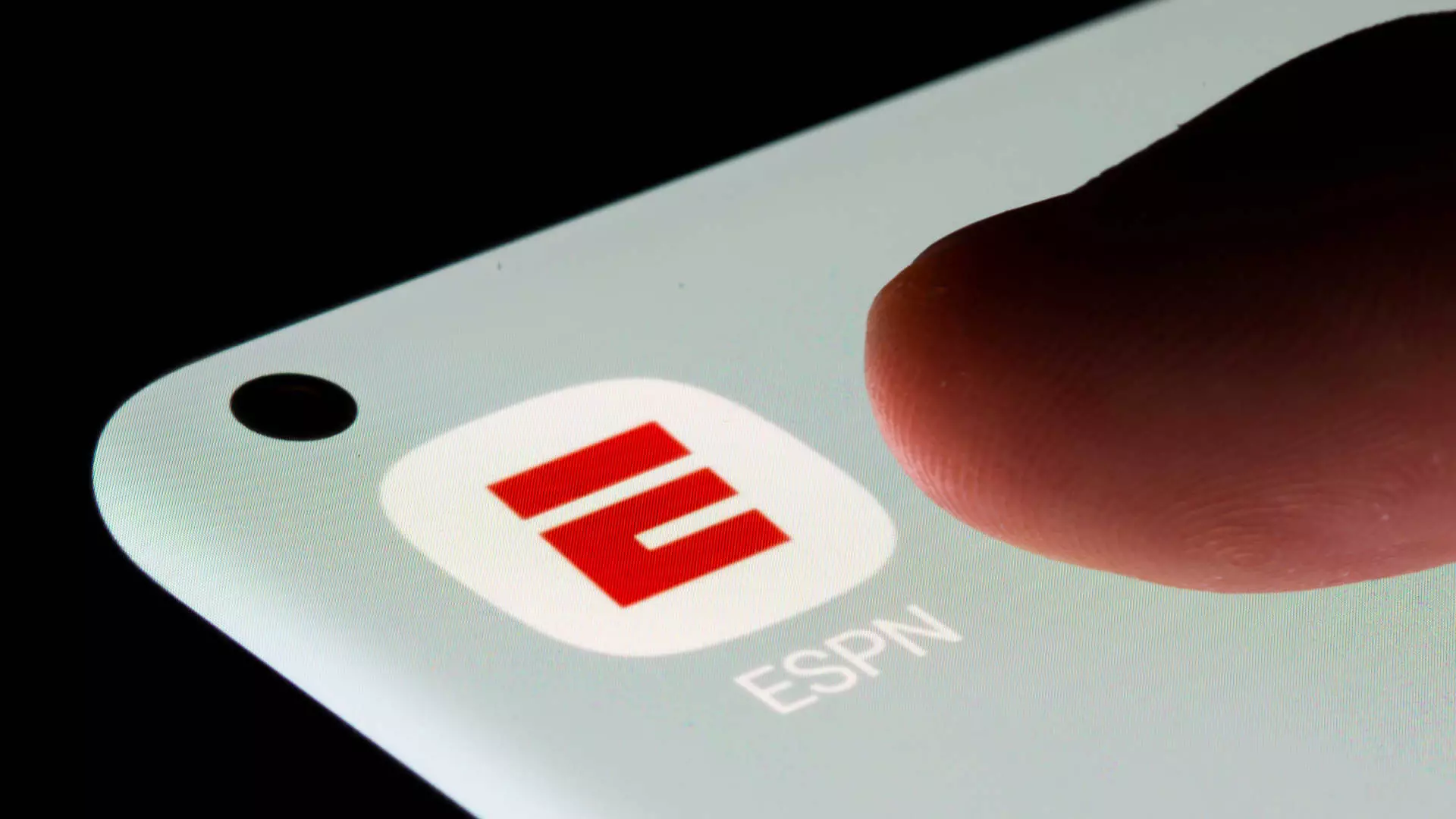ESPN has taken a bold step into the streaming landscape with its newly announced service, priced at $29.99 per month. While it may seem like a competitive move in an ever-growing market, this price tag creates a financial barrier that could alienate casual sports fans. In a time when entertainment options proliferate, most consumers are discerning about where they allocate their monthly subscriptions. A monthly fee that rivals the likes of Netflix or Hulu, especially for those who may only watch a few games or events, appears excessive. The real question is: does ESPN believe its content is worth this premium, or is it counting on the brand name to sell subscriptions?
Bundling Conceals True Costs
The bundling of ESPN’s streaming service with other Disney offerings, namely Disney+ and Hulu, may seem like an attractive deal at $35.99 per month. However, it’s essential to question whether this tactic is more about luring in customers than providing value. By masking the high cost with the allure of an initial discount for new users, ESPN may deceive subscribers into thinking they are getting a bargain when they are, in fact, signing up for a one-year commitment. After the first year, customers will be forced to reevaluate the service’s worth as the price comes back to a steep $35.99. This approach shifts the burden of proof to the consumer: “Prove to me this is worth my money once the promotional period ends.”
ESPN+: The Unwanted Middle Child
With the introduction of this premium service, ESPN+ has been relegated to a lesser status—an unwanted middle child. Priced at $11.99 a month, this offering remains an entry-level product. However, it lacks access to some of the most sought-after live programming, leaving many sports enthusiasts feeling like they must choose between a full ESPN experience or nothing. ESPN+: instead of serving as a stepping stone to greater things, now feels like a pit stop for consumers who want a taste but not the full meal. It exemplifies the industry’s trend of fragmenting content while frustrating loyal sports fans who just want to tune in.
Streaming Simplification or Confusion?
While ESPN Chairman Jimmy Pitaro suggests that naming the application simply “ESPN” aims to simplify the complex streaming landscape, the reality is that it could further contribute to viewer confusion. In a world where consumers are already inundated with an overwhelming choice of platforms and services, such an attempt to streamline might backfire. Casual viewers might find navigating through different layers of offerings a challenge rather than the ease they desire. The confusion surrounding pricing and program access in the vast sea of streaming options only steers some away from ESPN altogether, particularly if they can’t easily discern the differences.
The Missed Opportunity for Innovation
In an age when technology is evolving faster than ever, sports streaming presents a unique opportunity for innovation. Rather than relying solely on nostalgia and existing brand equity, ESPN has a chance to reimagine the way fans engage with sports. The company is introducing new features like a personalized “SportsCenter,” but these additions feel more like an afterthought than a revolutionary step forward. Where is the bold vision for enhancing viewer engagement? Shouldn’t we be seeing virtual reality experiences for pivotal games or an interactive element that allows fans to engage in real-time stats and data? ESPN has the resources to lead this change, yet seems to settle for minimum viable features instead.
An Apparent Overlook of Consumer Trends
Lastly, the strategy of targeting the 60 million households “on the sidelines” reveals a colossal misunderstanding of modern media consumption trends. Continuously increasing monthly fees might push viewers further away from cable residuals and into the hands of free streaming platforms, resulting in lost revenue and prestige for ESPN. In ignoring the changing preferences of viewers—many of whom favor flexibility and convenience—ESPN seems poised to retain a myopic view that could ultimately cripple their long-term brand potential. Instead of focusing solely on converting cable subscribers, ESPN needs to rethink its mission and embrace the expansive digital future.
The looming challenge for ESPN is that, as they try to recharge their relevance in a digital arena, consumers may not be willing to blindly follow the antiquated price structures that characterized traditional cable. As it stands, the new streaming service may be doing more to alienate than attract new audiences.

